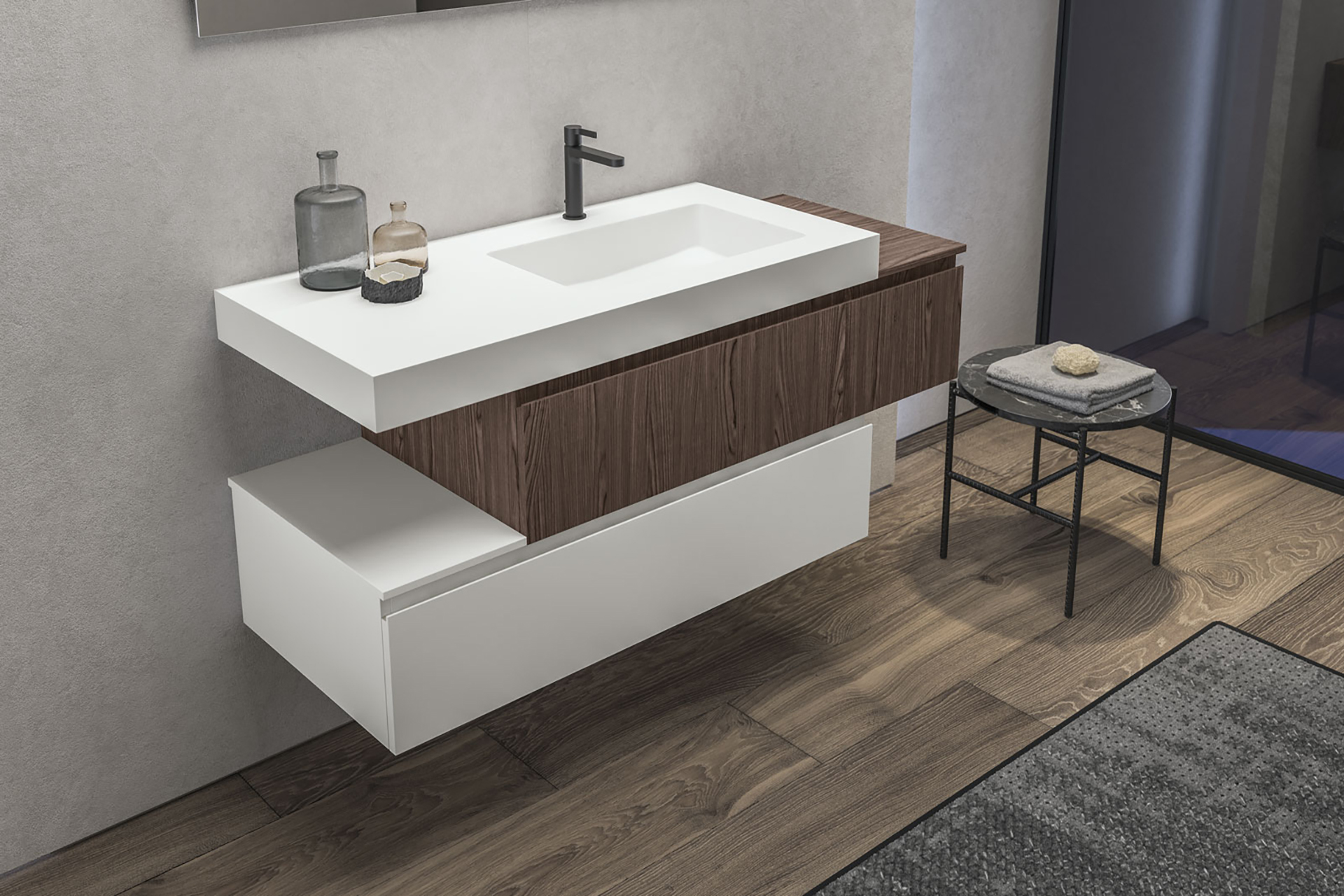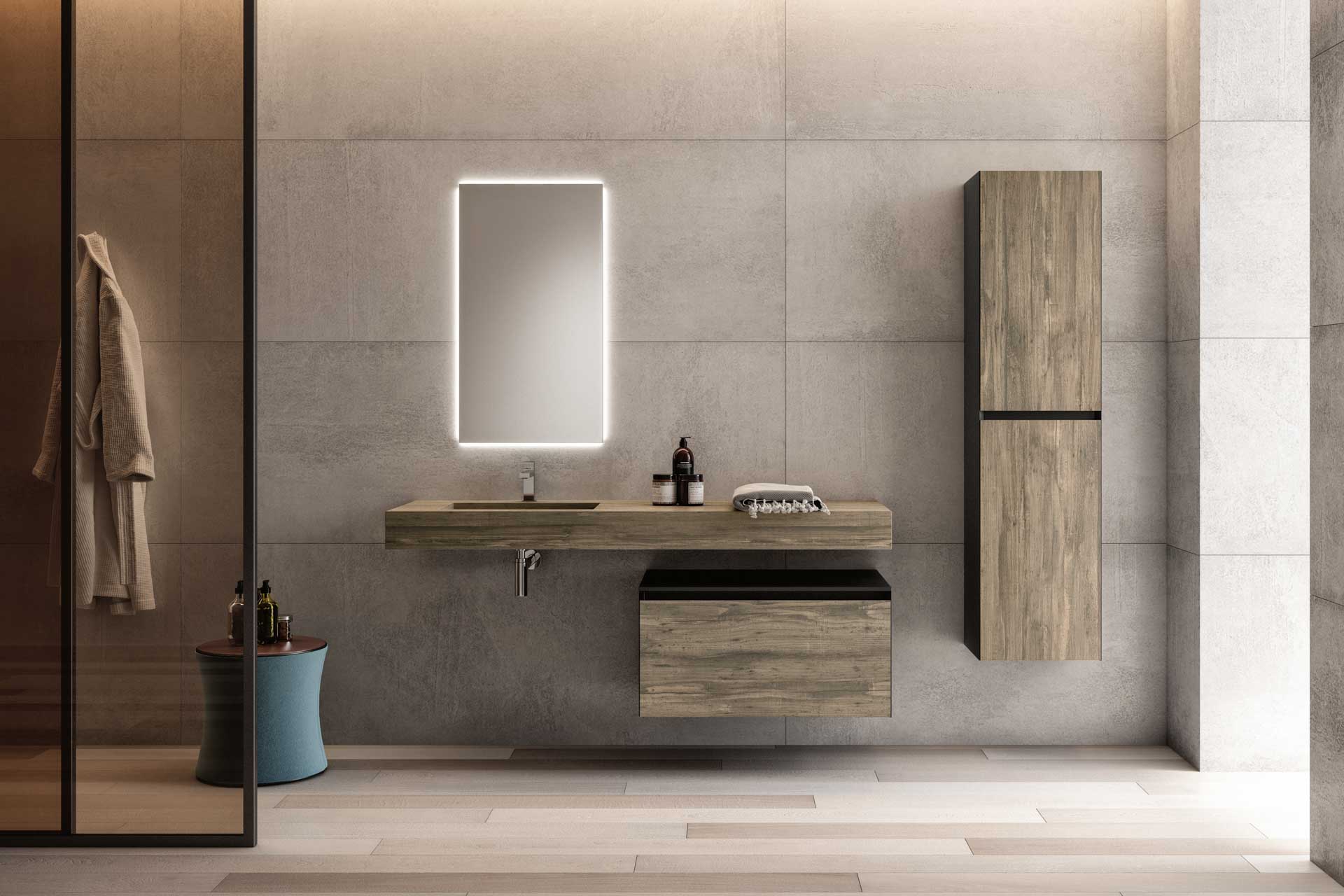Understanding European Design Principles in Bathroom Vanities

European bathroom vanities are renowned for their elegance, functionality, and timeless appeal. They embody a design philosophy that prioritizes simplicity, craftsmanship, and a focus on creating spaces that are both beautiful and practical.
Key Aesthetic Elements, European design bathroom vanities
European bathroom vanity design is characterized by a distinct set of aesthetic elements that contribute to its overall appeal. These elements include:
- Simplicity: European vanities often feature clean lines, minimal ornamentation, and a focus on functionality. This minimalist approach creates a sense of calm and sophistication.
- Craftsmanship: European designers place a high value on craftsmanship. Vanities are often made from high-quality materials such as solid wood, natural stone, or metal, and are meticulously crafted with attention to detail. This commitment to quality results in pieces that are durable and aesthetically pleasing.
- Functionality: European vanities are designed to be both practical and stylish. They often feature clever storage solutions, integrated lighting, and ergonomic designs that enhance usability.
- Timeless Elegance: European bathroom vanities are designed to stand the test of time. Their classic aesthetics and enduring quality make them a valuable investment that will enhance the beauty of any bathroom for years to come.
Comparison with Other Styles
European bathroom vanity design stands out from other popular styles in several ways:
- Contemporary Style: While both European and contemporary vanities embrace simplicity, contemporary designs often incorporate bolder geometric shapes and more pronounced lines. European vanities tend to be more understated and traditional in their approach.
- Traditional Style: Traditional bathroom vanities often feature ornate details, elaborate carvings, and a more historical aesthetic. European vanities, while rooted in tradition, tend to be more refined and minimalist in their design.
- Transitional Style: Transitional bathroom vanities bridge the gap between traditional and contemporary styles. They often feature elements of both, resulting in a balanced and harmonious aesthetic. European vanities, with their emphasis on timeless elegance, can seamlessly integrate into transitional designs.
Historical Influences
European bathroom vanity design has been shaped by a rich history of cultural influences and artistic movements:
- Art Deco: The Art Deco movement, which flourished in the 1920s and 1930s, emphasized geometric patterns, bold colors, and luxurious materials. This influence can be seen in some European bathroom vanities, which feature geometric designs and a sense of grandeur.
- Mid-Century Modern: The mid-century modern movement, popular in the 1950s and 1960s, emphasized functionality, clean lines, and natural materials. This influence is evident in European bathroom vanities that feature minimalist designs and a focus on practicality.
- Scandinavian Design: Scandinavian design, known for its simplicity, functionality, and natural materials, has had a significant impact on European bathroom vanity design. This influence is reflected in the use of light wood, minimalist forms, and a focus on creating a serene and inviting atmosphere.
Materials and Finishes: European Design Bathroom Vanities

European bathroom vanities are renowned for their exquisite craftsmanship and the use of high-quality materials. These materials, combined with various finishes, contribute to the vanities’ aesthetic appeal, durability, and functionality.
Common Materials Used in European Bathroom Vanities
The selection of materials for European bathroom vanities is often driven by a desire for both elegance and practicality. Common materials include:
- Natural Stone: Marble, granite, limestone, and travertine are popular choices for European bathroom vanities. These materials offer a timeless elegance, unique veining patterns, and durability. They are often used for countertops, sinks, and vanity tops.
- Wood: Oak, walnut, cherry, and mahogany are among the preferred wood species for European bathroom vanities. These woods are known for their rich grain patterns, natural warmth, and ability to withstand moisture. They are commonly used for cabinet construction, drawer fronts, and vanity legs.
- Metal: Brass, chrome, nickel, and stainless steel are frequently incorporated into European bathroom vanities. These metals add a touch of sophistication and can be used for hardware, faucets, legs, and accents. They are known for their durability, resistance to corrosion, and ease of cleaning.
- Ceramic: Ceramic is a common material for bathroom sinks and vanity tops. It is known for its durability, resistance to moisture, and ease of cleaning. Ceramic sinks come in various shapes, sizes, and finishes to complement the overall design of the vanity.
Finishes and Treatments Applied to Materials
European bathroom vanities often feature a wide range of finishes and treatments that enhance their aesthetic appeal and durability. Some common finishes include:
- Polished: Polished finishes create a smooth, glossy surface that reflects light. This finish is often used for natural stone countertops and sinks, enhancing their natural beauty and making them easier to clean.
- Brushed: Brushed finishes create a textured surface with a satin-like appearance. This finish is commonly applied to metal hardware and accents, adding a subtle elegance and a touch of warmth.
- Distressed: Distressed finishes create a vintage or antique look by adding intentional wear and tear. This finish is often used on wood cabinets and drawer fronts, giving them a rustic and timeless appeal.
- Painted: Painted finishes offer a wide range of colors and styles, allowing for customization and personalization. This finish can be applied to wood cabinets, metal accents, and even natural stone surfaces, creating a unique and stylish look.
Material Combinations and Finishes
European bathroom vanities often showcase innovative combinations of materials and finishes to create visually stunning and functional designs. Here’s a table showcasing some common combinations:
| Material | Finish | Pros | Cons |
|---|---|---|---|
| Natural Stone (Marble) | Polished | Elegant, timeless, easy to clean | Prone to scratches, requires regular sealing |
| Wood (Oak) | Distressed | Rustic charm, unique character | Requires regular maintenance, susceptible to moisture damage |
| Metal (Brass) | Brushed | Sophisticated, warm, durable | Can tarnish over time, requires cleaning |
| Ceramic | Glazed | Durable, easy to clean, variety of colors and styles | Can be susceptible to chips and cracks |
European design bathroom vanities often prioritize sleek minimalism, with clean lines and understated elegance. While the vanity itself is a focal point, it’s crucial to consider the overall bathroom design, including elements like the bathroom ventilation grill design.
A well-chosen ventilation grill can complement the vanity’s aesthetic, ensuring both functionality and visual harmony in the space. European bathroom vanities, with their emphasis on refined design, often pair beautifully with ventilation grills that prioritize sleekness and integration.
European design bathroom vanities are renowned for their elegant simplicity and timeless appeal. From sleek minimalist designs to intricate carvings, these vanities often feature natural materials like wood and stone. To complement the overall aesthetic, consider the impact of your bathroom door design.
For inspiration, explore a range of styles and finishes at bathroom door design images. A cohesive design approach, incorporating both vanity and door choices, will elevate your bathroom into a haven of sophistication and style.